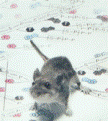Papers in the Biological Sciences

Jay F. Storz Publications
Document Type
Article
Date of this Version
9-2-2008
Abstract
The differential gain and loss of genes from homologous gene families represents an important source of functional variation among the genomes of different species. Differences in gene content between species are primarily attributable to lineage-specific gene gains via duplication and lineage-specific losses via deletion or inactivation. Here, we use a comparative genomic approach to investigate this process of gene turnover in the β-globin gene family of placental mammals. By analyzing genomic sequence data from representatives of each of the main superordinal clades of placental mammals, we were able to reconstruct pathways of gene family evolution during the basal radiation of this physiologically and morphologically diverse vertebrate group. Our analysis revealed that an initial expansion of the nonadult portion of the β-globin gene cluster in the ancestor of placental mammals was followed by the differential loss and retention of ancestral gene lineages, thereby generating variation in the complement of embryonic globin genes among contemporary species. The sorting of ε-, γ-, and η-globin gene lineages among the basal clades of placental mammals has produced species differences in the functional types of hemoglobin isoforms that can be synthesized during the course of embryonic development.


Comments
Published in Proceedings of the National Academy of Sciences, USA 105:35 (September 2, 2008), pp. 12950–12955; doi 10.1073/pnas.0804392105 Copyright © 2008 by The National Academy of Sciences of the USA. Used by permission. http://www.pnas.org/cgi/doi/10.1073/pnas.0804392105